Welsh Springer Spaniels are a medium-sized dog that, like the English Springer Spaniel, was bred to locate and retrieve game birds. They’re also one of Britain’s oldest sporting dogs, and their lineage is said to date as far back as 7000 BC.
They’re not very heavy shedders either.
Welshies have a medium-length, waterproof coat that sheds moderately throughout most of the year, except during heavier periods of shedding such as spring and fall. They’re not very difficult to groom, but they are prone to mats and tangles. So proper brushing is needed to maintain their coat.
Let’s take a closer look at how much hair you should expect to see around the home, and what sort of effort is needed to maintain their coat and reduce shedding.
Recommended: Go here to see our top-rated dog hair blow dryers
Welsh Springer Spaniel Shedding
Welsh Springer Spaniels are a moderate shedding breed.
To help put this into perspective, they shed more than the American Water Spaniel and Irish Water Spaniel, which are both low shedders. But less than heavy shedding dogs like the Chow Chow for example.
Overall, they sit somewhere in the middle of the shedding spectrum, along with breeds such as the English Springer Spaniel and English Cocker Spaniel which they are often compared to.
Either way, shedding is normal in most healthy dogs. So it’s generally nothing to be concerned about or try to “stop” from happening. They are simply shedding their old hair to make way for the new batch. The key is to learn how to manage it.
And thankfully, managing the fur loss of a Welshie is fairly straightforward. The most important thing is regular (and proper) grooming. As well as making sure they are as healthy and happy as can be, which is just as important.
Because, in some cases, excessive amounts of shedding can be caused by things such as poor diet, stress, or some sort of underlying problem. Even high levels of shedding can be “normal” at times, especially during spring and autumn. But if you are concerned about the shedding, it might pay to visit your local veterinarian for assistance.
For the most part though, as long as your Welshie is in good shape, keeping the shedding to a minimum is all about proper grooming. So let’s take a closer look at how to maintain their coat.
Grooming Your Welshie
Welshies have a soft, straight, medium-length coat that, according to the AKC breed standard, is waterproof, weatherproof, and thornproof.
This makes him an ideal working dog that is versatile enough to hunt in virtually any type of weather. Whether it be on land or in the water, hot or cold, they’re up for the challenge.
However, given the length and texture of his coat, and the fact that he has feathering on the legs, chest, ears and underside of his body, he is prone to mats and tangles. Which is why he’s not as easy to groom as other gun dogs that have short coats, like the English Pointer.
With this in mind, it’s important to brush your Welsh Springer Spaniel after he’s been out playing or hunting, so that he doesn’t accumulate lots of painful mats or knots.
For general coat maintenance, you really only need to brush him two or three times a week. But you’ll need to brush more often if he’s outside a lot to remove mats and dead fur from his coat during periods of heavy shedding. So how often you brush really depends on how active he is and what level of shedding you’re comfortable with.
The ideal brush for a Welshie is a slicker brush and metal comb.
A slicker brush is a brush made up of fine wire bristles with protective plastic tips on the end, and these work well to help remove matting and loose fur. Together, the combination of both the comb and slicker can be very effective at maintaining his coat and preventing a large portion of his hair from dropping off of his coat and filling your home.
Related: 13 Ways to Stop Your Dog Shedding Excessively
Bathing is another great way to combat molting. This isn’t something you need to do very often with a Welshie, but bathing with a proper dog shampoo can help loosen and remove dead hairs more than brushing alone.
Provided you don’t over brush or over bathe, these simple grooming routines can not only help remove the old hair, but may also help improve the condition of his coat. Because when you brush, you spread his skin oils and a good quality dog shampoo should add moisture to his coat, rather than dry it out.
And since a healthy, well maintained coat tends to shed less, this can ultimately mean less time spent vacuuming up dog hair. So even though brushing and bathing takes time, it can end up saving you time down the road.
Are They Non-Allergenic?
No, Welsh Springer Spaniels are not hypoallergenic.
But the truth is, no dog is ever 100% non-allergenic because allergies to dogs are caused by dander (dead skin), saliva, sweat and urine, which all dogs produce. It’s just that some dogs are referred to as “hypoallergenic” because they are more suitable than others for people who suffer from allergies.
And the reason for this is because so-called hypoallergenic breeds typically produce less dander and shed very little hair. And, while the hair isn’t the problem, dander attaches itself to the dog’s hair. So, generally speaking, the more a dog molts, the more dander you will find around the home.
So, if you’re looking for a non-allergenic breed, Welshies aren’t the best option. A more suitable alternative breed might be the Cavalier King Charles Spaniel or Poodle for example, but there are others to consider too.
Welshies vs English Springer Spaniels
Welsh Springer Spaniels and English Springer Spaniels are very similar breeds that share similar backgrounds. So much so that they were actually considered to be the same breed right up until 1902. But there are some key differences between these two breeds.
And perhaps the most notable difference is that Welshies are smaller than English Springers. Welshies range from 17 inches tall (minimum female height) to 19 inches tall (maximum male height). Whereas English Springers can be anywhere from 19-20 inches tall. So there’s a potential 1-2 inch difference in height.

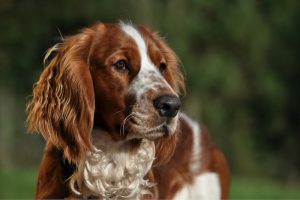
There’s also a difference in the color of their coat. Welshies only come in red and white, while English Springer Spaniels come in a variety of colors. And the ears of the Welsh Springer are smaller which is one easy way to spot the difference.
Aside from appearances, there are other similarities. For example, both were bred as hunting companions that locate game birds, flush (or “spring”) them from hiding, find and “point” to the bird in such a way that alerts the hunter to the birds whereabouts, and in some cases retrieve the bird.
They also have similar coats. Except that the English Springer Spaniel breed standard clearly states they have an undercoat, while nothing is said about Welsh Springer Spaniels in this respect. Either way, they both shed about the same amount year-round and require about the same amount of effort to maintain.
Related: Do English Springer Spaniels Shed Lots?
And both have similar temperaments. Although the general consensus is that Welsh Springer Spaniels are a bit more reserved in nature than English Springers. And for whatever reason, they’re not quite as popular.
Either way, when you boil it all down, no one breed is better than the other. Both are amazing dogs that make great hunting and family companions. So it really comes down to personal preference as to which breed you think will be best suited to you and your family.


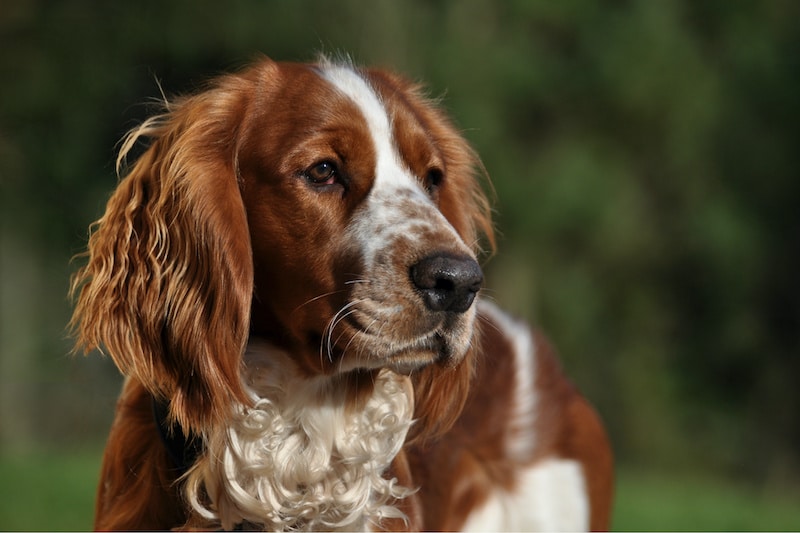



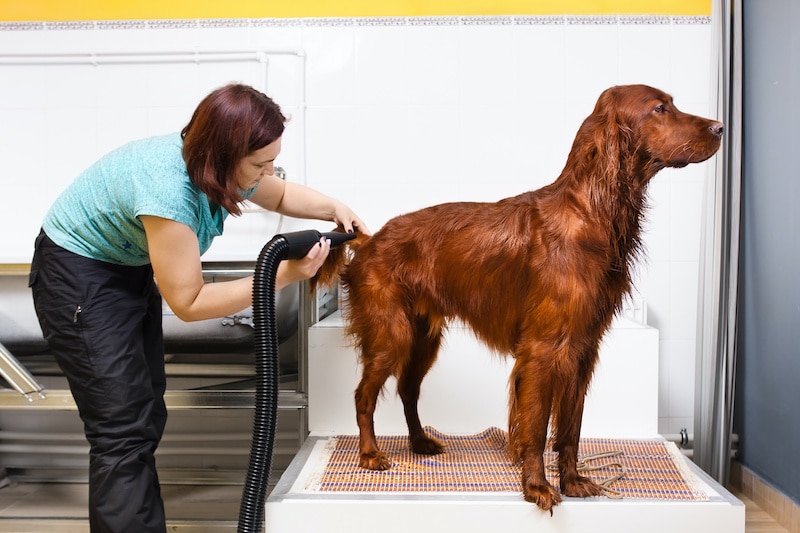
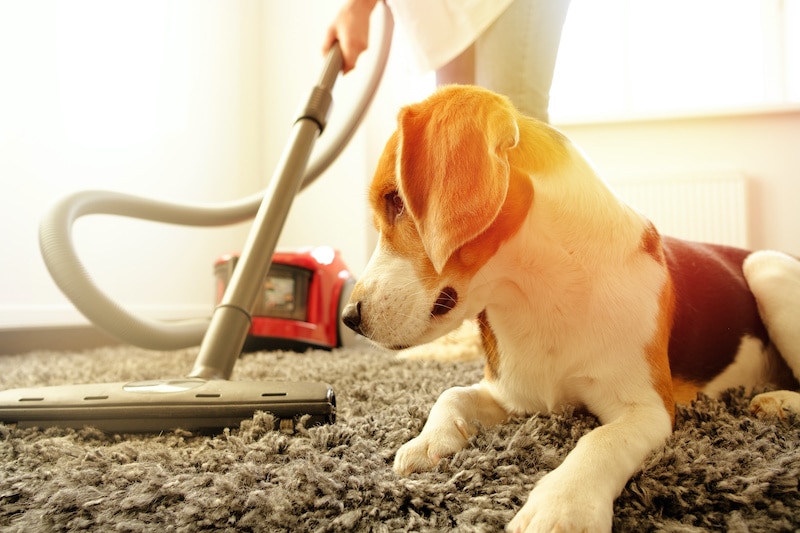

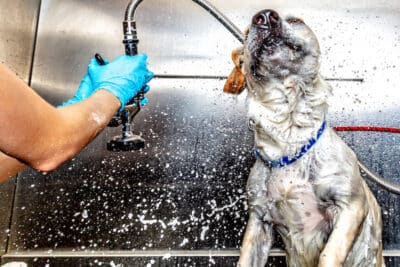


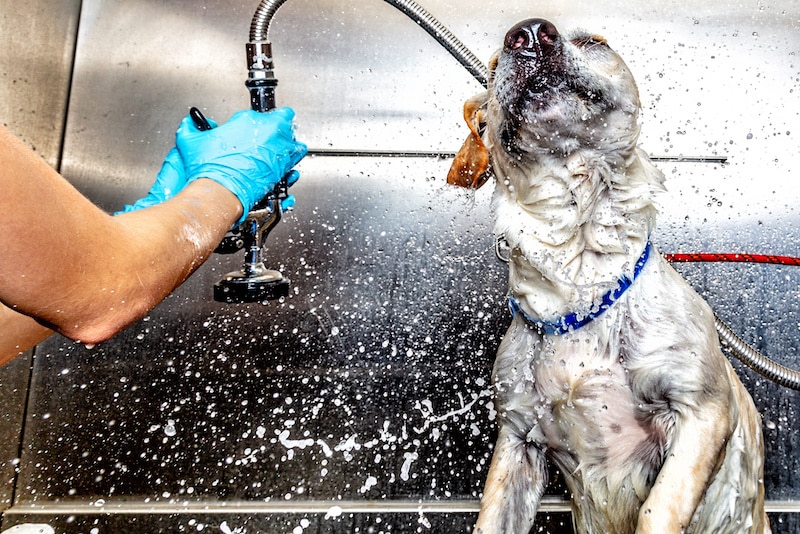
Please note: By submitting a comment using the above comment form, you confirm that you agree with the storage and handling of your data by this site as detailed in our Privacy Policy.